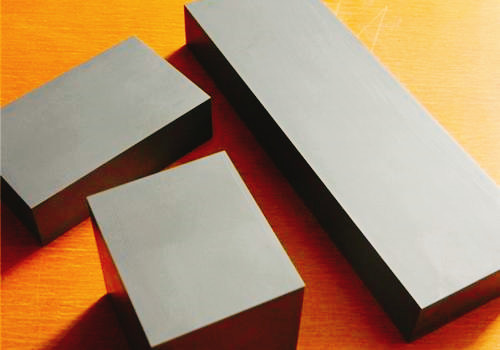Tungsten steel, also known as tungsten carbide, is a sintered composite metal containing some metal carbide, mainly including tungsten carbide, cobalt carbide, niobium carbide, titanium carbide, tantalum carbide. The tungsten steel matrix is composed of the hardening phase and the bonding metal. The grains of the carbide phase usually 0.2-10 microns, are bound together by a metal binder which usually refers to the metal cobalt (Co), nickel (Ni), iron (Fe), or other metals and alloys may also be used for some special purposes. Bonding metal is generally iron group metals, such as cobalt, nickel and hence tungsten-cobalt alloy, tungsten-nickel alloy and tungsten-titanium cobalt alloy. High-speed steels and some hot-work die steels are typical steels containing tungsten. Tungsten increases the hardness and heat resistance of steel significantly, but the toughness decreases sharply. Cemented carbide, known as the tooth of modern industry, has a very wide range of applications.
The features of Tungsten steel
- High density. Most of the density of tungsten steel is 11.0 ~ 15.0g/cm2, with different densities of tungsten steel materials for different purposes.
- High intensity. Especially compressive strength and bending strength. The relationship between cemented carbide and cobalt content and granularity is that the compressive strength of cemented carbide exceeds 6GPa when the cobalt content is 4-5%, but it decreases with the increase of cobalt content and also decreases with the increase of WC granularity.
- High hardness. Usually 82.0 ~ 93.6HRA, equivalent to 69 ~ 81HRC. With the addition of cobalt content, hardness will decrease, with the reduction of particle size hardness will increase, as for high-temperature hardness is reduced with the rise of temperature.
- Good red hardness It can reach 900 ~ 1000℃ and does not deform when keeping 60HRC.
- Good wear resistance. Most tungsten steel can process stainless steel, cast iron and other hard metal materials.
The applications of tungsten steel
Cutting tool
Such as turning cutter, milling cutter, planer cutter, drill, boring cutter, etc., used for cutting cast iron, non-ferrous metals, plastics, chemical fiber, graphite, glass, stone and ordinary steel, can also be used for cutting heat-resistant steel, stainless steel, high manganese steel, tool steel and other materials difficult to process.
Geological mining tool
Typical products: Road digging tooth/road digging tooth, gun bit, bit head, bit tooth, DTH bit tooth, roller bit tooth, coal cutting machine cutter tooth, etc.
Dies tool
Wire drawing dies, cold heading dies, cold extrusion dies, hot forging dies, forming die, and drawing tube mandrel, such as a long mandrel, ball mandrel, floating mandrel, etc.
In addition, tungsten steel can also be used to make rock drilling tools, mining tools, drilling tools, measuring tools, wear-resistant parts, metal grinding tools, cylinder lining, precision bearings, nozzles, etc.
Many people often confused the concept of tungsten steel with tungsten carbide. Generally speaking, tungsten carbide is made by powder metallurgy process with tungsten carbide as the main body and cobalt or other bonding metal sintering together, of which tungsten content is generally more than 80%. To put it simply, all alloys with hardness over HRC65 can be called tungsten carbide, so tungsten steel is a type of tungsten carbide; Strictly speaking, however, tungsten carbide can not be tungsten steel.







